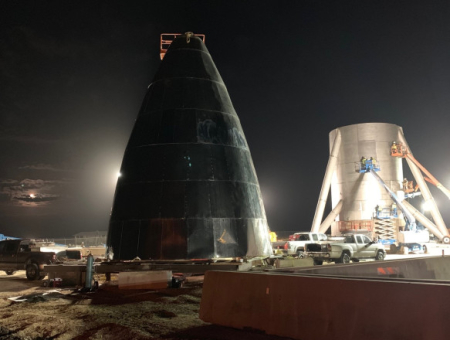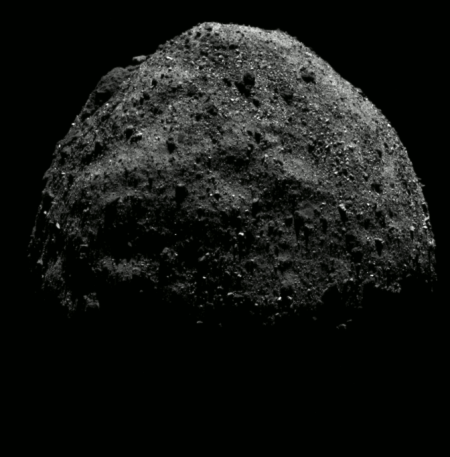Musk tweets peek at Starship hopper

Capitalism in space: Elon Musk this week tweeted an image of the Starship test hopper, adding that they hope to begin test flights by March.
“This test hopper is at full body diameter of 9m / 30 ft, just not full height. Super Heavy will be full height & diameter,” Musk tweeted, indicating that the company will go directly to building a full-scale version of the rocket booster, rather than a truncated test version.
It seems to me that Musk continues to embarrass all other rocket companies, both private and governmental, with his effective use of current technology to innovate and produce new designs. While everyone else seems locked into building the same old things, his company is using what it knows to try to build something smarter and more efficient.
SpaceX’s track record suggests that it will do exactly what it is trying to do, even if it likely takes longer than they predict. Others should take heed, or they will all get left behind.

Capitalism in space: Elon Musk this week tweeted an image of the Starship test hopper, adding that they hope to begin test flights by March.
“This test hopper is at full body diameter of 9m / 30 ft, just not full height. Super Heavy will be full height & diameter,” Musk tweeted, indicating that the company will go directly to building a full-scale version of the rocket booster, rather than a truncated test version.
It seems to me that Musk continues to embarrass all other rocket companies, both private and governmental, with his effective use of current technology to innovate and produce new designs. While everyone else seems locked into building the same old things, his company is using what it knows to try to build something smarter and more efficient.
SpaceX’s track record suggests that it will do exactly what it is trying to do, even if it likely takes longer than they predict. Others should take heed, or they will all get left behind.




